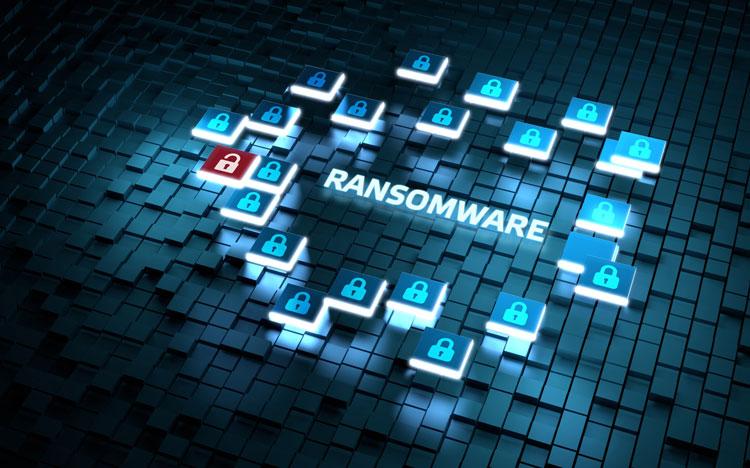What Security Challenges Do Organizations Face In The New Year?
In The New Year, Senior Information Security Executives Will Try To Set A Comprehensive List Of Priorities And Goals For Improving Cyber Security.
Security Challenges, The Infosecurity website has researched security priorities, which shows that security teams aim to design and implement an integrated set of security approaches, improve and make overall changes to them.
This set includes policies, procedures, and technologies to prevent cyberattacks and counter security threats and threats. Solutions will tailor to the security needs of businesses and the IT and threat sectors.
Ransomware threats
A report released by Kaspersky Security shows that in 2022, ransomware will be a significant security threat to businesses. Dangerous ransomware attacks against influential organizations such as the US Fuel Pipeline Company and the world’s largest meat packaging company have shown that hackers have targeted large companies.
In mid-June 1400, JBS’s computer networks were hacked, disrupting much of the company’s operations in Australia, Canada, and the United States. During this major offensive, the world’s largest meat packaging company was forced to pay $ 11 million in bitcoin ransom to hackers to gain twice access to its communications infrastructure.

Hackers use ransomware to block users and employees from accessing their systems information by encrypting files. In this case, users and employees will have to pay a ransom to access their information twice. The amount requested also depends on the importance of the data, the credibility of the organization, the type, and the size of the business.
Ransom attacks can seriously affect the productivity of organizations and their services and cause irreparable financial damage. Implementing anti-malware solutions, constantly backing up data, installing security patches on systems, and restricting Internet access are practical ways to combat ransomware threats.
Vulnerability in IoT infrastructure
The Internet of Things is one of the technologies that is constantly evolving. Although businesses can reap the benefits of implementing IoT solutions, unfortunately, the use of intelligent systems is still not very secure and has many security challenges. The fact is that most IoT manufacturers are reluctant to invest enough in security solutions for these products and therefore cannot quickly detect, detect and respond to security problems or threats.
Internet of Things does not rush. It has made the IoT infrastructure face its challenges, and these systems could easily fall victim to hacking attacks. Businesses need to maintain security and IoT equipment. Follow the instructions provided by security experts, such as having proper policies for setting passwords, performing updates, network segmentation, and ongoing staff training.
Challenges of cooperation
Cooperation is one of the most critical issues in the business world. Different teams work together to develop a product, and sometimes they may not all be in the same place. Organizational cooperation conditions play an essential role in the constructiveness and continuity of these collaborations. One of the challenges affecting association is the weakness in communicating through traditional messaging methods.
Productivity and speed in sending messages, video conferencing, and easy file sharing are significant in maintaining product quality and streamlining development processes. Businesses must use current information and collaboration mechanisms to meet these challenges. These platforms are equipped with a convenient user interface, various options for integration, customization, and compliance with legal standards. However, the most critical security threat to the challenges of collaboration and the use of payment software is the security breaches of these products.
Zoom was one of the most popular software that attracted the attention of users and companies at the same time as the Corona epidemic. While the software provides good usability, it has security vulnerabilities related to privacy, video hacking, and online meetings. So that while holding an important business meeting, a hacker suddenly enters the video conference. In response to these events, the company cited unfamiliarity with the platform as the reason for these problems.
Increasing the risks of cloud technologies
The use of cloud technology has increased dramatically in recent years, and more and more companies are moving towards cloud-based platforms. Information outsourcing and cloud technology pose many security threats to businesses.
Cloud service providers indeed have different security solutions, but their main focus is securing their infrastructure. Therefore, organizations that use such services must take responsibility for protecting their information and their data security. Hackers try to use this loophole to carry out cyber attacks.
It is recommended that you provide security solutions before disclosing your information to service providers. Implement various firewall configurations, virtual private network setup, multi-step authentication, etc. Additionally, you can use proxies to increase the security of your business.
Lack of technical skills
One of the common problems of organizations in dealing with security risks is the lack of skilled personnel and security specialists. In a situation where all organizations inside and outside Iran face a shortage of specialized personnel, vulnerabilities in cyber security are still increasing. Therefore the competition for recruiting technical personnel in security will intensify.
Therefore, there must be sufficient supply to handle such a large volume of demand. Several institutions and schools that offer advanced security training cyber such as penetration testing, digital criminology, etc., are provided to scholars.
Given that data breaches cost millions of dollars to small and large companies each year, businesses can not ignore this risk. They must make the necessary investments in security and ensure that their employees have the skills needed to deal with various threats. In addition, you need to keep in mind that it takes time to strike the right balance between supply and demand for skills.
Of course, many businesses have decided to improve existing employees’ current level of knowledge and provide them with appropriate security tools instead of hiring new ones. In this case, security personnel and teams will learn the skills and knowledge needed to deal with cyber-attacks and prevent attacks.
Changing circumstances means changing priorities.
In 2022, the main goal of security managers is to increase the speed of responding to security personnel, cyber-attacks and detect these threats as soon as possible. Therefore, it is predicted that we will see an increase in the move towards cloud technologies, and the market for solutions like Splank will be more prosperous than before.
“Given the continued telecommuting of employees, the situation of organizations will be insecure, as we will see an increase in cyber attacks and security risks, ” said Liz Miller, chief executive, and analyst at Constellation Research.
“Senior information security executives need to increase employee motivation and manage situations, ” says Myler. Currently, the biggest problem facing security personnel is dealing with the myriad of cyber-attacks, some of which prefer to continue in other areas and trends. For this reason, security teams need the ability to manage such a situation and deal with security threats” To have.”
“They must take smart, safe, and quick steps and use smart solutions to identify and deal with threats, instead of leaving everything to security personnel.”
Darrell Keeling, Chief Information Officer and Director of Security at Parkview Health, believe that cybercriminals’ skills evolve and use professional tools to execute ransomware attacks. In addition, the move of organizations towards digital technologies and cloud services paves the way for hackers to penetrate.
“Organizations need to be able to adapt to the latest technologies and identify emerging threats,” says Keeling. Implementing intelligent behavior analysis software, using tools and software to identify and hunt for threats, and strengthening third-party risk management programs are things that organizations need to do. “They can increase the effectiveness of security operations and reduce additional costs by implementing a plan to simplify security technologies.”
List of priorities of senior information security managers
According to Gartner’s research on the security priorities of senior information security executives, organizations will invest heavily in the development of security technologies and tools. The most important priorities of the security managers of the organizations, which will be highly focused on, are the following:
Provide security technologies to protect data stored on cloud services.
Provide a comprehensive approach to integrating and enhancing security solutions.
Purchase modern security tools to access data.
Purchase practical monitoring tools to monitor employees’ behaviors and analyze their activities.
This list includes operations related to implementing coordination plans, automation, and response to the incident and their promotion. Security researchers believe that developing a set of security solutions and upgrading them is futile and necessary as organizations move toward cloud computing.
“Senior information security executives need to be able to secure cloud environments by reviewing and analyzing existing cloud security management platforms,” said Kevin F. Brown, CEO of Science Applications. ” The demand for cyber security forces is high, so to continue the business, we need to hire and retain employees who have perseverance, motivation, and superior talent.”
Ransomware is now more dangerous than any other security threat. Hackers can infiltrate, manipulate, or lock-in victims’ systems using advanced, professional tools and implement ransomware attacks.
Therefore, security managers must prioritize resilient and recovery plans in security priorities, execute strategies, and use protective and preventive capabilities. By implementing a zero-trust approach in enterprise and cloud networks, security teams can secure traditional networks and the cloud and protect the confidential data of the organization and customers.
“None of the security plans for the coming years are new because security managers will try to upgrade and improve the security solutions they have used in the past years to meet the organization’s security needs,” Bran said. He believes that change is only effective when it is accompanied by progress.
Therefore, in the new year, cybersecurity managers, in addition to transforming and upgrading existing security solutions, should consider a criterion for measuring the progress of organizational security.
“Organizations need to design security principles, procedures, and controls in line with their security threats and risks and continually improve their security capabilities,” says Bran. You may not need to change all the security solutions and approaches to improve the organization’s security; Nearly half of all organizations in 2022 will focus on enhancing existing security solutions and providing security services resources. In addition, some will use a specific process to evaluate the effectiveness of security solutions and services continuously.
Senior Information Security Managers need to think beyond a fixed framework and design comprehensive risk-based security solutions. For example, they should focus on a risk management plan, identifying and prioritizing threats within their work area, rather than securing them based on specific frameworks and providing standard services. “In this case, security teams can organize and manage the resources they need to deal with security threats.”
Bran believes that organizations can work together to model threats and design products and services to deal with future threats.
Potential security challenges for years to come
Most senior information security executives believe that convincing all organization members about the security risks ahead is not an easy task and a significant security vulnerability.
Lack of resources, lack of access to a comprehensive security solution to prevent security incidents, challenges related to hiring and retaining professionals, failure to meet security requirements, and lack of training courses in cybersecurity are some of the things that cause weakness in organizations for Dealing with cyber threats. Therefore, managers of organizations should pay attention to these critical points before prioritizing security needs.
“Automation in technologies such as the zero-trust approach, cloud security tools, etc., helps reduce the challenges of manpower and human error, ” says Michael Ibarra, chief information officer at Cambridge Holdings.
last word
The persistence of the coronavirus and the telecommuting of employees on the one hand, and the advancement of cybercriminals in the implementation of malware campaigns and security threats, on the other hand, will create new and risky security challenges for organizations.
Therefore, senior information security managers should try to prioritize the security needs of organizations, improve existing security solutions, provide appropriate training plans to increase the security knowledge and awareness of employees, be prepared to respond and respond quickly to cyber-attacks.


